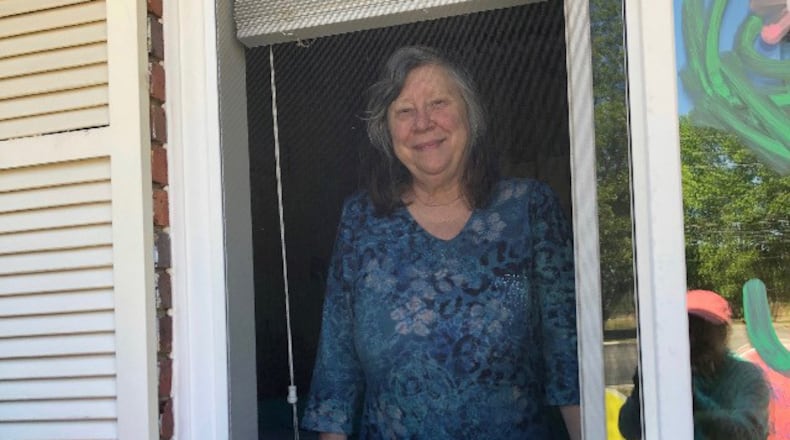Hopes were raised for thousands of families this week when Gov. Brian Kemp announced guidelines for resuming visits at nursing homes and senior care facilities. Months of strict lockdowns, it seemed, may finally be nearing an end.
But as details of the proposal came into focus, it was clear that many homes will not be able to resume visitations anytime soon. The coronavirus is too widespread and the benchmarks in Kemp’s proposal too strict for homes to begin again opening their doors.
Facilities must be free of COVID-19 cases for four weeks prior to easing visitation restrictions. Roughly 48% of nursing homes and 18% of assisted living and large personal care homes still had active cases this week.
And the resumption of visitations is also linked to factors outside the homes’ control. In counties where the spread of the virus is still high, homes can’t start easing restrictions. While infection rates overall have been declining, most counties still don’t meet the criteria.
“I’m concerned we’re going to have many more months of this,” said Terry Barcroft, president and CEO of Wesley Woods Senior Living, which operates senior living and nursing homes across Georgia. “It’s the worst kind of ageism to expect our older adults to bear the brunt of this.”
Then on Thursday the federal Centers for Medicare and Medicaid Services (CMS) issued its own guidance for nursing homes as they try to chart a safe resumption of visits.
The federal formula still accounts for community spread and outbreaks at the homes, though its criteria is less restrictive that Georgia’s. For example, the federal guideline urges facilities to be free of COVID-19 for two weeks prior to any visits. It encourages outdoor visits where possible, but its community infection criteria is less stringent than Georgia’s.
The CMS announcement prompted some Georgia operators and advocates to appeal to the state on Friday to use the federal standards. They “are a great balance of safety and honoring the wishes of residents and their families,” Ginny Helms, president of LeadingAge Georgia, wrote to the governor.
Her group, which represents non-profit providers, had urged Kemp last month to implement a statewide mask mandate, in part to help reduce community spread and help make it safe for visits to resume.
“Everybody in the state needs to be taking precautions to get the rates down,” she said. “The residents are really missing their families.”
Kemp’s spokesman said late Friday the governor’s office is reviewing the CMS guidance.
Collateral damage
The lockdowns in senior care settings took hold in March as the country recognized the severe threat the virus posed to seniors and facilities struggled to get adequate supplies of personal protective equipment. Across the country, at least 40% of the nearly 200,000 coronavirus deaths have occurred in these long-term care settings, including the deaths of more than 2,400 Georgians.
But with no end in sight to the virus’s threat, many advocates, policymakers and families have recognized the collateral damage brought on by the virus. They are asking for some kind of balance.
“While we must remain steadfast in our fight to shield nursing home residents from this virus, it is becoming clear that prolonged isolation and separation from family is also taking a deadly toll on our aging loved ones,” said CMS Administrator Seema Verma as her agency rolled out the guidelines on Thursday.
Pace Tyson understands the sadness and frustration that has come with the lockdowns. His mother, Marsha, has Alzheimer’s and has been in a Dublin nursing home since last year. His visits with her since March have been largely restricted to Facetime and window appearances.
During that time, she contracted the coronavirus and recovered. But Tyson has detected a noticeable decline, both cognitively and physically. At some point during the lockdown, she no longer recognized him as her son.
He knows the governor’s order is meant to protect, but as he sees her continue to decline without family members able to visit, it makes him “saddened and angry.”
“Everyday I don’t get to spend with her it’s another day that’s kind of wasted,” he said. “Already with Alzheimer’s and dementia you’re already losing that person. Not to be there when they physically need you is heartbreaking."
Kemp’s plan outlined in a 23-page order by the state Department of Public Health on Tuesday placed Georgia among at least 17 states that have resumed visitations or outlined plans to do so, according to LeadingAge. In addition to the visitation guidelines, it outlines ways for facilities to safely resume some social activities and communal dining.
The visitation plan is a three-phased approach. It requires masks for visitors, social distancing and other safety precautions.
“While we must remain steadfast in our fight to shield nursing home residents from this virus, it is becoming clear that prolonged isolation and separation from family is also taking a deadly toll on our aging loved ones."
Phase I is more or less what’s been in place for months. It limits visitations to end-of-life situations with some exceptions for outdoor and window visits. Phase II allows for outdoor visits as the 14-day county infection rates drop below 10% and case rates per 100,000 drop below 100, as long as a facility has been free of infection for 28 days. Phase III allows indoor visitations if the county infection rates drop below 5% and cases per 100,000 drop below 50.
The majority of counties would not meet Phase II or III today, said Tony Marshall, president and CEO of the Georgia Health Care Association, which represents most nursing homes in the state. Since Kemp’s announcement, he said, some of his nursing home members have already had families show up thinking they could visit.
“There’s no question there are factors beyond the control of the centers that are going to be critically important to allow visitation to occur again," Marshall said. "The good news for Georgia is many of those factors are moving in the right direction.”
However, some homes still face shortages of staff and personal protective equipment.
Maxine Williams, who lives in Woodbine and whose mother is a resident at a nursing home in St. Marys, worries the requirements may be too stringent. She would like to see rules for carefully planned visits with designated visitors.
“We have always asked safety to be a priority, but this is not the safety I was looking for,” said Williams who is the administrator of the Georgia chapter of a Facebook group called Caregivers for Compromise because Isolation Kills Too.
Williams has felt particularly crushed over the visitor ban because her mother, Betty Cason, was infected with the coronavirus in early April. And Cason, who is 89, is back in the hospital battling the coronavirus again, according to Williams.
“Rigid guidelines prevented me from providing my mom much-needed emotional support for the past six months, but didn’t prevent my mom from getting the virus twice,” she said.
Keep Reading
The Latest
Featured






